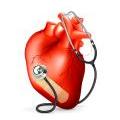Before a cell in the body grows and differentiates to perform a required function (from being a liver cell or a brain cell, for example) it starts off life as an undifferentiated form that has the potential to form any type of cell, this is called a stem cell. It appears they also have another function and that is to be the body's ‘spare part’ department and to serve as a sort of internal repair system. They will divide and grow without limit to replace other cells as long as the person or animal is still alive.
One of the biggest killers is heart failure which happens as the result of heart tissues becoming damaged, and so the theory is that stem cells could be used to accelerate the rate at which the body’s own self-repair mechanism operates. However, matching the theory to reality has been a challenge due to difficulties associated with the ability to get the cells to the right place and of the damaged heart tissues themselves accepting help from these foreign interlopers. The body’s normal immune reaction to this type of material is to reject it. If, on the other hand, the stem cells are taken from the patient’s own heart, or what is known as autologous cells there will be a far greater chance that these cells will be accepted and integrated. The trouble with this approach is that the heart even under healthy conditions produces very low levels of stem cells, and so the  solution is to harvest the few and grow them up to sufficient numbers using standard tissue culture techniques in the laboratory. It currently takes around three or four months to generate sufficient numbers of viable cells, and so the researchers are also looking into ways of speeding up this process. These autologous cells can then be injected back into the patient’s heart.
solution is to harvest the few and grow them up to sufficient numbers using standard tissue culture techniques in the laboratory. It currently takes around three or four months to generate sufficient numbers of viable cells, and so the researchers are also looking into ways of speeding up this process. These autologous cells can then be injected back into the patient’s heart.
The studies have shown that this approach seems to work in animal models and that the stem cells trigger the growth of new heart tissue as well as heart blood vessels. Provided that the initial tests continue to show good results, researchers at Imperial College London say that they could be applying for permission to test the treatment in patients within two years.
Professor Peter Weissberg, medical director of the British Heart Foundation says “Although we have been able to prevent heart attacks and treat people with heart attacks when they occur, we haven’t been able to stop the damage that occurs when a heart attack takes place. The reason we are making such a noise about it now is that science has progressed to a point where it looks biologically feasible that we might be able to create new heart cells to repair the heart.”







